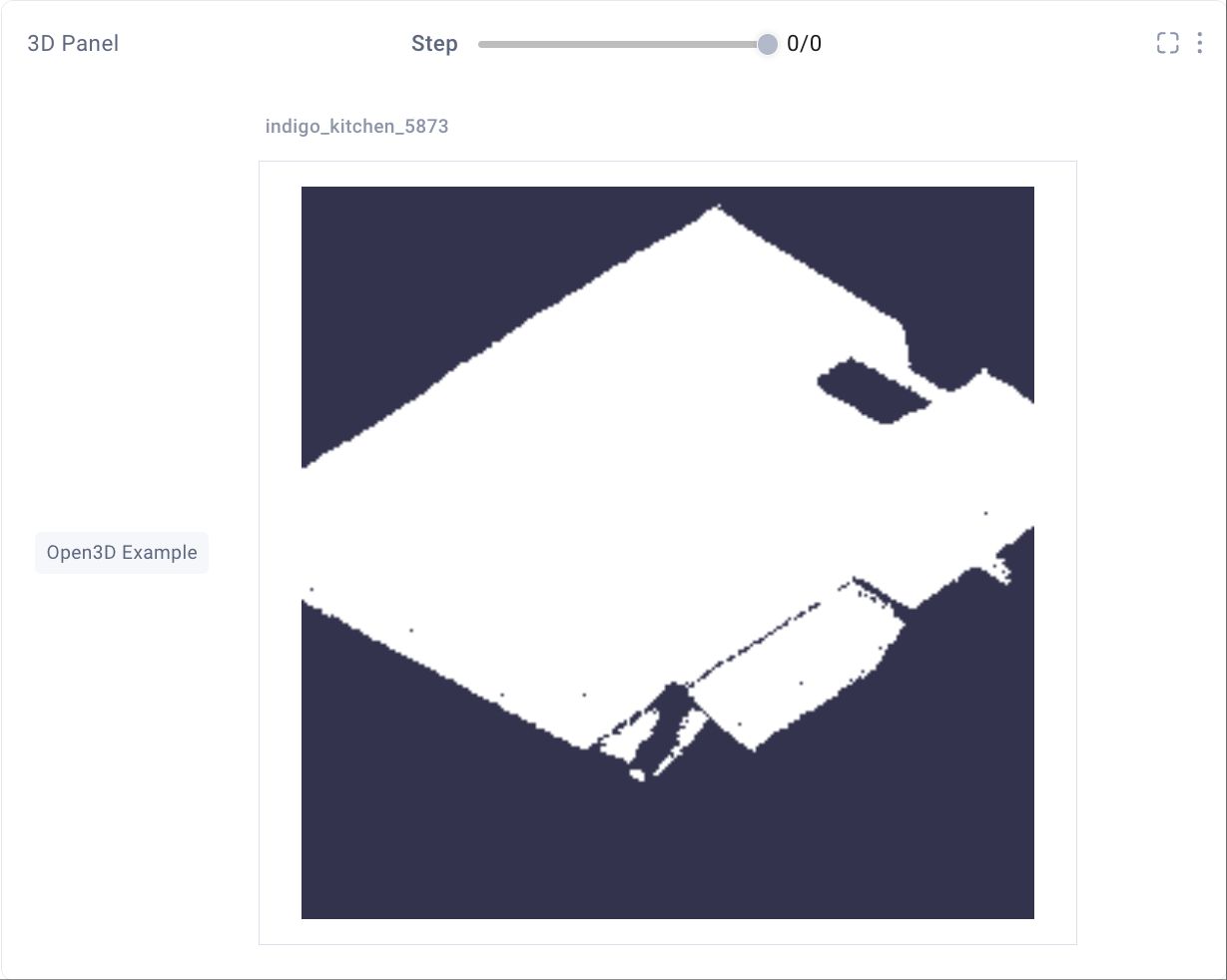Log 3d point clouds¶
Comet's 3d point clouds represent spatial information in three dimensions through a collection of points, sometimes accompanied by color information.
Comet allows you to create scenes with millions of 3d points that you can visually inspect through advanced functionalities such as zooming, panning, and more. Alternatively to points, you can visualize boxes which are useful when working on segmentation tasks with 3d data.
The following methods can be used to log 3D point clouds:
log_points_3d(), either withpointsorboxes.
The following panel can be used to visualize 3D point clouds:
In addition all 3D point clouds logged to an Experiment can be viewed in the Single Experiment page tab:
- Assets & Artifacts Tab:
othersfolder.
For example, you could...
Evaluate the performance of models trained on 3d data by logging point clouds alongside model predictions and visually inspect the alignment between predicted and ground truth object positions.
Log with points¶
The example below logs one 3d cloud defined as a points list using the open3d library.
1 2 3 4 5 6 7 8 9 10 11 12 13 14 15 16 17 18 19 | |
The points argument takes a list of points, where each point is defined as an [X, Y , Z] vector.
You can optionally specify the color for a point by using the [X, Y, Z, R, G, B] format, where R, G and B should take a value in [0, 1].
Log with boxes¶
The example below logs 100 boxes of equal size, and assigns a random label (and color) to each.
1 2 3 4 5 6 7 8 9 10 11 12 13 14 15 16 17 18 19 20 21 22 23 24 25 26 27 28 29 30 31 32 33 34 35 36 37 38 39 40 41 42 43 44 45 46 47 48 49 50 51 52 53 54 55 56 57 58 59 | |
The boxes argument takes a list of boxes. Each box is defined as a dictionary with the following entries:
1 2 3 4 5 6 7 | |
where only segments and name are required.